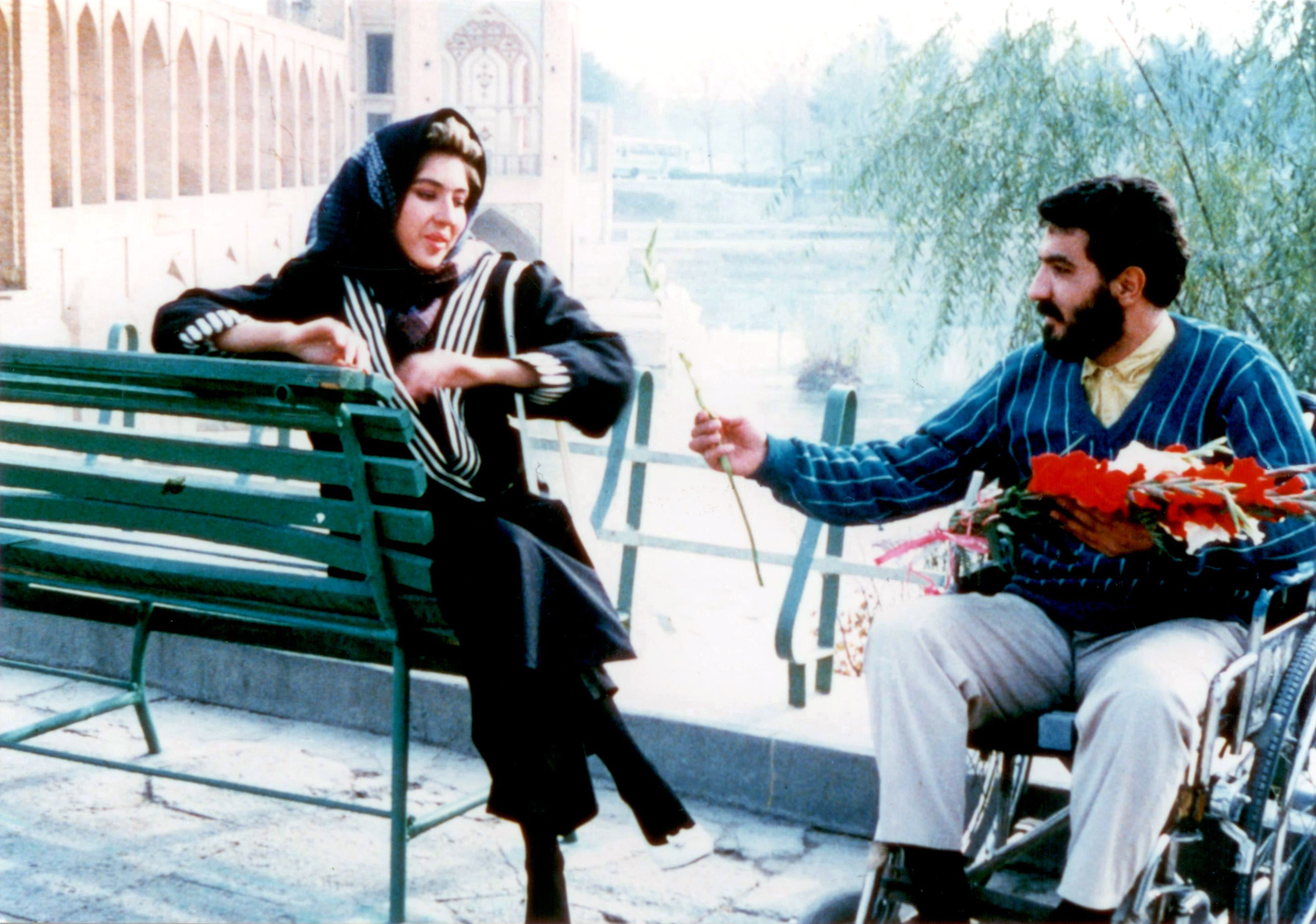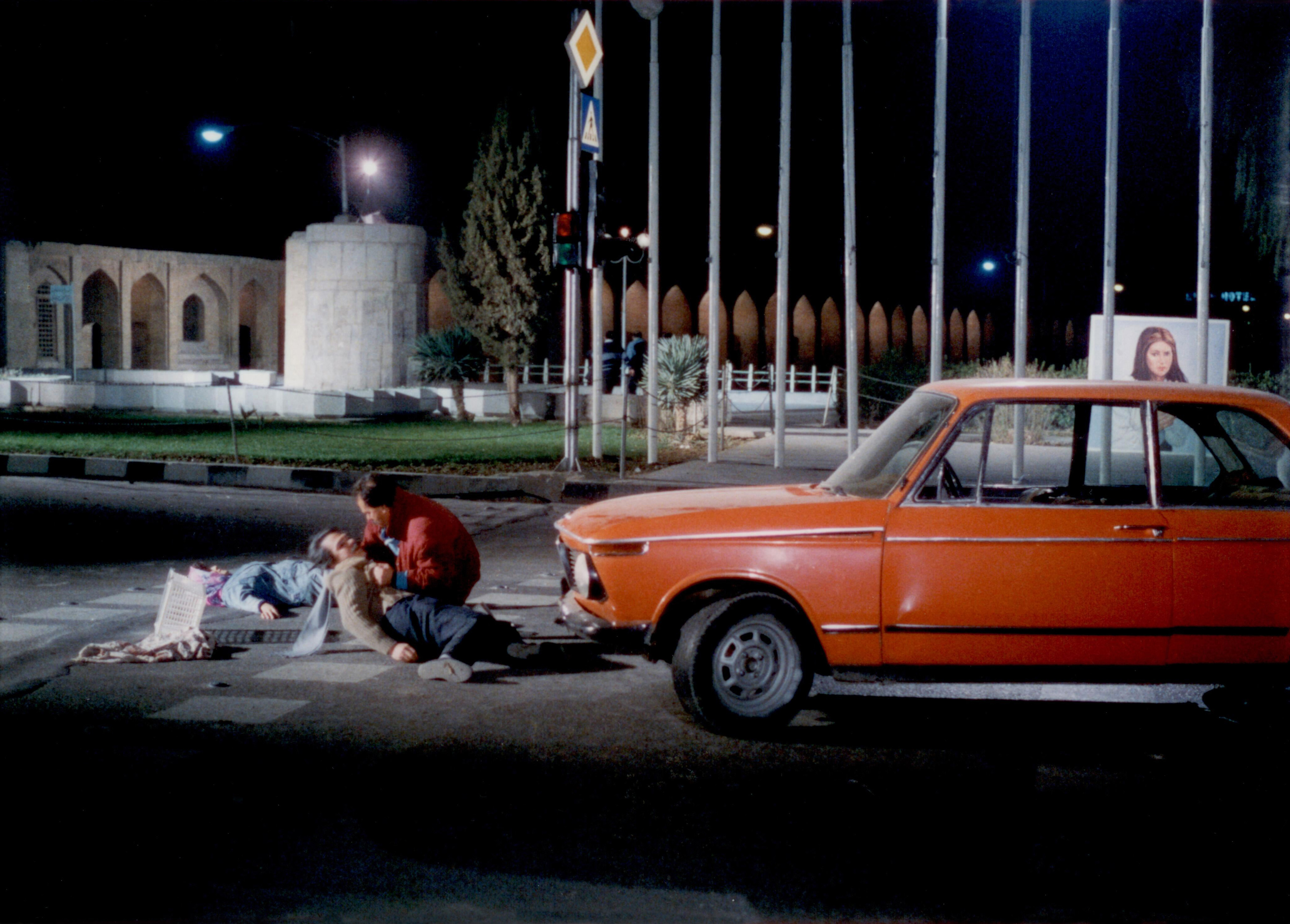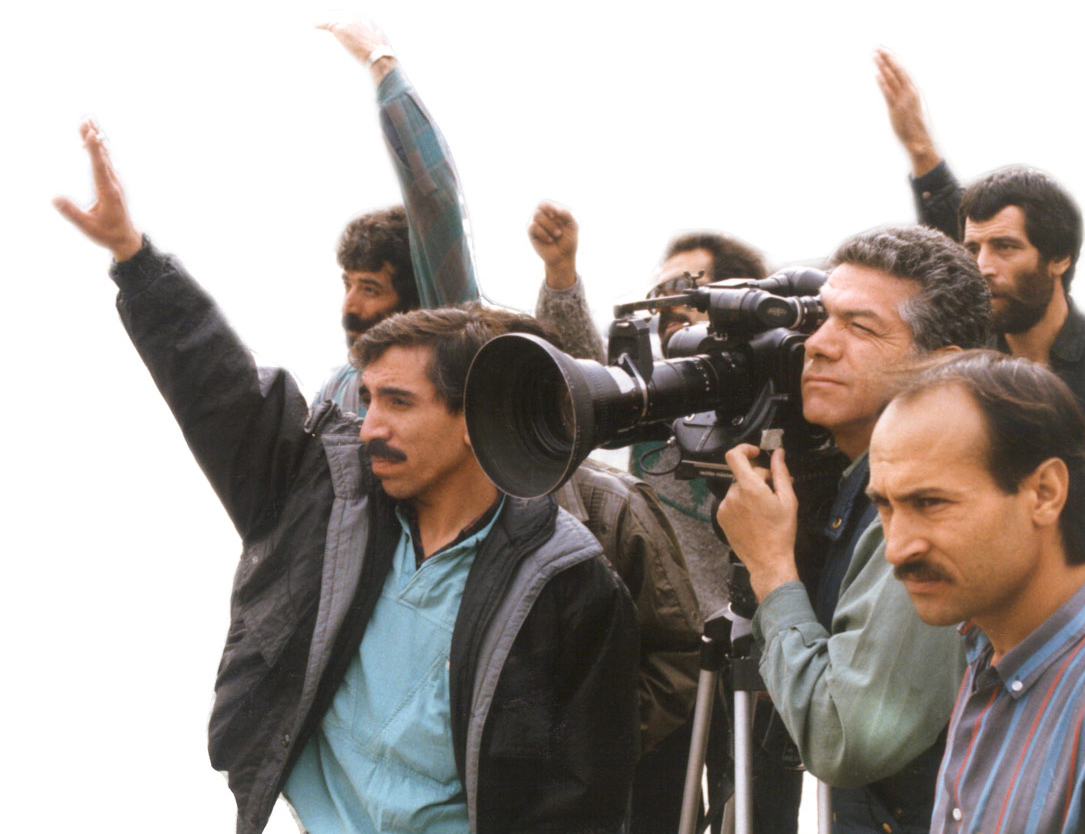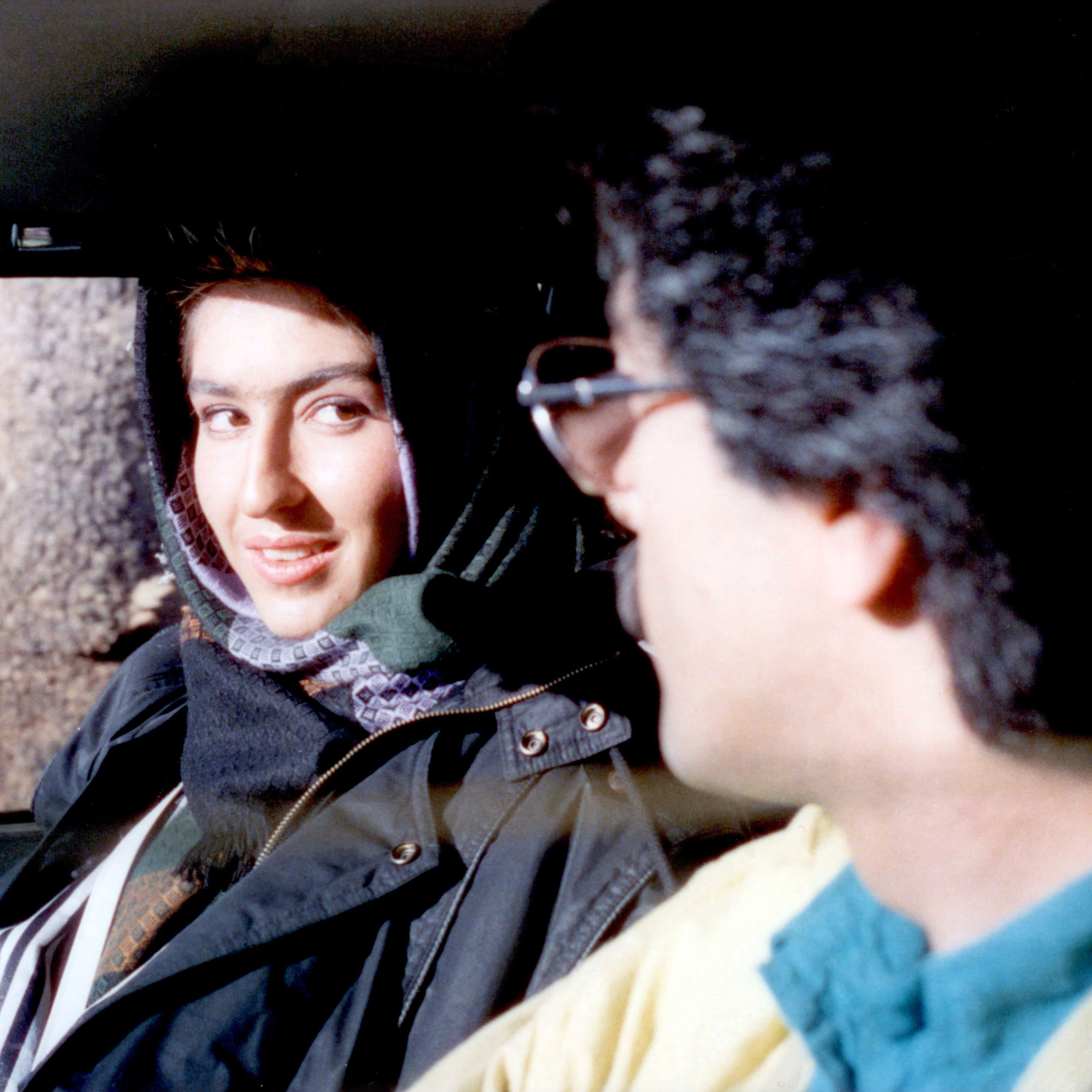Nearly thirty years later, Mohsen Makhmalbaf’s heavily censored film is finding new audiences
A year after Ayatollah Khomeini’s death in 1989, and in the wake of the protracted and devastating Iran-Iraq War, Mohsen Makhmalbaf released a film that would not be seen. Makhmalbaf made The Nights of Zayandeh-Rood in 1990, only to have it censored and mutilated, and then suppressed entirely by the Iranian government before it could be released widely. The film traces Mohammad Alaghmand, an anthropology professor in Esfahan, through various phases of the Iranian Revolution – before, during, and after. Of the original hundred minutes, nearly a third of the film was cut out and destroyed completely by censors for its ‘counter-revolutionary’ content, which was deemed a threat to ‘national security’. Last year, Makhmalbaf himself managed to smuggle the remaining sixty-three minutes out of Tehran and into Europe, where the film was screened for the first time to audiences outside Iran at the Venice Film Festival.
While the narrative structure remains largely intact, there are, of course, clear gaps and inconsistences; upon viewing the recovered negative decades later, Makhmalbaf felt the film ‘looked like a living thing with no limbs’, though ‘it was still breathing’. Certain scenes end abruptly and remain unfinished, while others are totally devoid of sound, leaving audiences to wonder – what speech was muted, and why? If Hamid Dabashi is correct in reading Iranian cinema as a ‘cultural manifestation of major national traumas’, then the film’s consistent disruption unintentionally and indeed beautifully captures the fragmented and perhaps neurotic way trauma is remembered and forgotten. The selective, and, in many ways meticulous deletion of memory enacted upon the film by the censors, far from obscuring Makhmalbaf’s message, makes it all the more vivid.

The Nights of Zayandeh-Rood as one sees it today is both about the Iranian Revolution as an event and how it is remembered. It has passed through the editorial and artistic hands of the filmmaker and the state, both of which have structured the narrative and loaded it with memories of the Revolution. More than anything, the story is one of callous realism, presenting a deeply cynical attitude towards violence, love, politics, and life itself, well underscoring Makhmalbaf’s contributions not only to film in Iran, but also around the world.
Indeed, the film stands as the director’s cynical and disparaging warning to the politically active intellectual that revolution is not only impossible, but also undesirable
Much of The Nights of Zayandeh-Rood revolves around Alaghmand’s relationship with his daughter, who works as a nurse in the suicide ward of a local hospital. She forcefully administers emergency medication to countless individuals who have tried to take their own lives, thus compelling them to continue living in melancholy: a heartbroken man, a woman whose son was martyred, a colonel who has simply ‘had enough’ of the War. They are disillusioned and indeed disoriented by betrayal, and consumed by what they have sacrificed, presumably in the name of nothing. They are besieged by their respective traumas, and inundated with grief; and yet, existing on the brink of death, they are persuaded or else forced to continue experiencing their own demise. Makhmalbaf embarks upon an inversion where life is a tragic inevitability and death its only escape; martyrdom is delinked from all purpose, and love is made only into heartbreak. For Makhmalbaf, death serves not as an ending, but an object of desire, which might remedy what he sees as the shortcomings of the Revolution, but which has nonetheless been denied to those who need it most. And, while the name of the Zayandeh-Rood translates to ‘Life-Giving River’, it certainly does not occupy this role in the film; instead, it takes life. It is into the banks of the Zayandeh-Rood that revolutionaries throw American-style advertisements of unveiled women, quite literally cleansing the cityscapes of that dreaded enemy of the Revolution and marker of decadence, gharbzadegi – ‘Westoxification’.

Makhmalbaf’s disappointment with the eventual outcome of a passionate revolution is, however, channelled most clearly through Alaghmand himself. One of the opening scenes has the professor interrogated about statements he had made in the classroom about the Shah. Violence, the professor had pointed out, is not unique to dictators and tyrants – it is part of ‘culture’ to be violent, an enduring fact of human existence that will not disappear with revolution or democracy. While blindfolded, he defends himself and his position profusely, claiming he’d been misunderstood, and that his statements were really an apology for the Shah, meant to exonerate him of any wrongdoing. After a long monologue, Alaghmand asks if he can remove the blindfold, but there is no response. He finally removes it, only to find there is no one in the room, and no one to listen to or absorb his long tirade. This gestures toward Makhmalbaf’s own disenchantment with the anti-intellectual turn following the Revolution, one that had once coalesced strongly around the radical ideas of figures like Ali Shariati and Jalal Al-e-Ahmad. Eventually however, many, including Makhmalbaf, came to resent and dismiss the underlying impulse behind those very ideas. After leaving the interrogation room, Alaghmand visits a roadside stand to buy a bottle of Coke, but after taking one sip, erupts in a fit of rage and smashes the bottle on the ground. ‘I drink Coke, therefore I am!’ he says. ‘I drink Coke, therefore I am!’ The anti-capitalist satire is perhaps an embittered intellectual’s last chance at having a voice in a state that refuses to hear him.

Mohsen Makhmalbaf (left, in blue shirt) and co. filming The Nights of Zayandeh-Rood
While one does not know what, precisely, was redacted by the censors decades ago, it is clear that Makhmalbaf’s narrative presented a challenge to how the state wanted the Revolution to be remembered. If it could exist in the communal consciousness as a moment of salvation, as a great and coherent collective movement, then its triumph could only lead to a better future. If, however, it was a slow and tenuous process of disenchantment – as Makhmalbaf insists – then the future could hold nothing but political emptiness. The timing of the film’s production and subsequent deletion notably coincided with the death of Ayatollah Khomeini. The passing of this ideological behemoth presented a moment in which Iranians were forced to look back at the meaning and character of the past decade, experienced through the mortality of the Revolution’s most prominent figure.
Khomeini’s funeral in the summer of 1989, a spectacle that entranced Western media outlets and drew millions of mourners in Tehran, would also be censored – even as it was happening. When the open casket was driving through the crowds, the mourners blocked its movement, tearing and grasping at the white shroud in which Khomeini was wrapped for a scrap of fabric, attempting to seize some fragment of the Ayatollah before his burial, clutching for a piece of the past while still in the present. The scrambling mourners tore the shroud to pieces, and Khomeini’s half-naked body fell to the ground; the live broadcast of the funeral went black. While he was alive, the aura of Khomeini, not to mention his immense political and theological clout, propelled the 1979 Revolution and sustained any remaining revolutionary impulse amongst the people over the next decade. His death, however, ushered in precisely the sort of disenchantment with revolutionary desire explored throughout The Nights of Zayandeh-Rood. Like Makhmalbaf’s film, the image of Khomeini’s lifeless body falling to the ground amidst chaotic grief was perhaps deemed too subversive and ‘counter-revolutionary’ for mass consumption, and so it too had to be deleted from memory. Respectively, Khomeini’s fall and Alaghmand’s unravelling brought a figure and a revolution that had relied so heavily on what Foucault called a ‘political spirituality’ – an unprecedented fusion of political impulse with theological intensity – into a crude and cynical reality.
It is in The Nights of Zayandeh-Rood that viewers see an early glimpse of what would become a refined signature throughout Makhmalbaf’s oeuvre – a ‘poetic surrealism’ that can only be the result of what Dabashi called a ‘deep political disappointment’. And, like the filmmaker’s most celebrated piece in the West, Kandahar, the film’s grand reception in Europe, and indeed ‘emancipation’ out of the confines of Iranian state censorship comes at a politically interesting time. Kandahar, a film about Afghanistan, was released just before September 11, 2001. The Nights of Zayandeh-Rood, on the other hand, is a film castigating the merits of revolution and warning against pastoralist history, released anew as most of the globe enters a state of deep political division. Indeed, the film stands as the director’s cynical and disparaging warning to the politically active intellectual that revolution is not only impossible, but also undesirable. Twenty-seven years later, one of Makhmalbaf’s earliest films is as resonant as ever.

